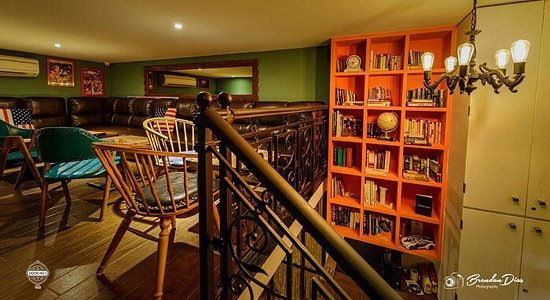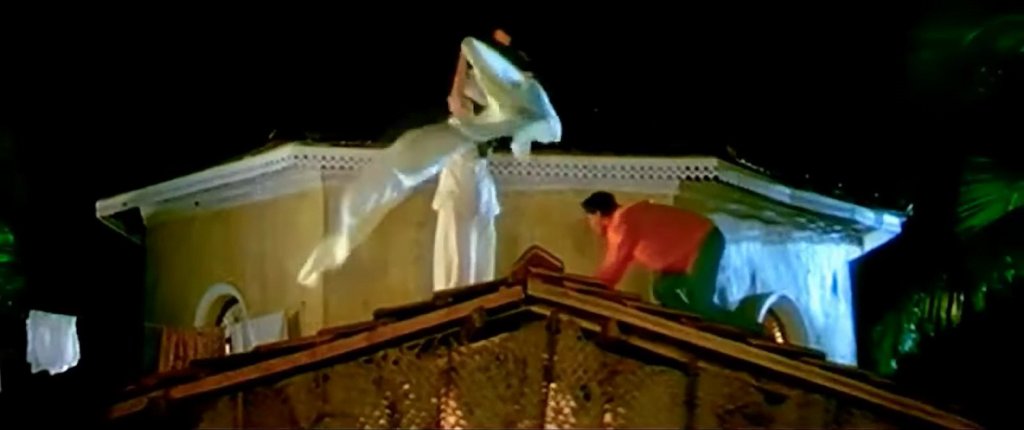Table of Contents
Introduction
If our lives are taped periodically and the events occurring in the course of time are the many situations that the characters face, we would choose to be the main character or play the lead role. Similarly, the supporting cast of our movie usually is housed in a place where major scenes get shot, probably that is the home we love to live in: it is somehow regarded as an admirable and crucial member of the film of life.
Certainly, before this whole hashtag boycott Bollywood era, was a legendary era when actors and actresses were role models for the audience, and everything they did, walked, danced, drove, loved, or denied to do, helped people follow them better. So, basically, a superstar’s existence is like a limited-edition minted action figure with bullet-proof glass enveloping it for many people in the country.
Whatever the movie is about, some iconic sets just get permanently imprinted in our minds. This piece of writing is dedicated to those great set designers, art directors, and people who selected such memorable places to shoot.
Early Modern setting
Movies like Humraaz of 1962, had ahead-of-its-time architecture. Elaborate patio, intricate main gate details, and startling interior spaces: just exquisite high-class rich parameters. They had a sunken living room, and mauve sofa covers; color themed home, which can be seen in many contemporary homes today. Indeed, a bunch of well-off lads must have tried this kind of style in those times and like a cycle, the sunk living room model has popularized itself again. The fun part about design is that once you add something conventionally innovative it catches the onlookers’ attention and a sense of comfort engulfs the user.

One of the most expensive houses today, Jalsa or the legendary superstar Amitabh Bachchan’s residence probably was the go-to place in the 1970s and 1980s. Due to its dual-colored distinct character, the house was food for the eye. It has a balance of both indoor and outdoor spaces, best suited for close-knit Indian families, making way for the then-emerging nuclear family concept in one of the world’s largest cosmopolitan cities. Scenes from the movies it has been in, always give a peculiar sense of flexible verticality.

Films like Chupke Chupke (1975), Satte pe Satta (1982), and many other chartbusters were shot in this majestic house, formerly owned by producer N.C Sippy. The two-storeyed house has a quirky garden and grand entrance, where the superstar loves to wave to his fans almost every Sunday.
Another similar scenario could be witnessed in the musical 1990s and the early 2000s comedies, comedy dramas, tragedies, and many other genres that took place in a modest hall of a residence in Madh. The famous Poonawala house is airy and lighted as it seems in movies like Saajan(1991), Deewana (1992), Raju Ban Gaya Gentleman (1992), Andaaz Apna Apna (1994). Wise use of light in scenes according to the scenes had different delivery for fans but the two-way staircases made similar bold statements making it more enjoyable and playful. Other movies from this era like Raju Chacha and King Uncle had a childhood urge of wanting badly to live at least a day here.
Sanjay Leela Bhansali’s contributions to Bollywood
Entering the world of Bollywood and not giving an account of director Sanjay Leela Bhansali’s universe would be unfair. Period dramas with magnificent and esteemed sets are a mix the director has always made the Indian audience love the art of filmmaking even more. Be it the Lal Qila (Red fort) scenes from Jodhaa Akbar (2008), a marvel of the Mughal courtyard palace architecture, or the ghostly Shanivar Vaada of Pune from Bajirao Mastaani (2015), these huge symbols of past kingdoms and empires plays an important role in movies to build up the feel of the time the story might have taken place.
Nobody can forget the Goan, clay-tile roofed beach house from Khamoshi (1996) nor can one forget the yellow-ochre Afghan Khilji residence from Padmavat (2018). Stories, screenplay, and attire though bring authenticity to Bhansali’s movies, but imagine if none of the above-mentioned films were shot in the exact locations would they have been so intense and worth-a-watch kind? Well, not really, isn’t it?

The Indian film industry has seen its own evolution after much hard work and vigor in the area of special visual effects and computer-generated images. The much-celebrated list of movies is incomplete without the dubbed hindi versions of regional films where a lot of attention is given to making a believable set through virtual reality using tools and techniques. Baahubali(2015 and 2017) had its own Amar Chitra Katha-type of set design. A fictional space that everyone wished was true and visitable.
Thanks to Sir SS Rajamouli who could gift us a monochrome city of the kingdom Maahishmati. The city felt to be inspired by Harappan civilization with aligned houses and front sitting spaces and staff supporting the roof above. Wide roads and clean settlements along the mother river were cool to watch. Groovy Dravidian temple architecture was placed at places in the palace and the chariot mimicking mandalas took the center stage in the movie.
Futuristic homes
Talking about modern technology, Nitya Mehra’s Baar baar dekho (2016) was a one-of-its-kind film to have celebrated the concept of futuristic homes, and institutions to administer a family’s future being. The protagonist sleeps at a different place to wake up in some other place in some additional time. It was great to watch but something fascinating was the touchscreen surfaces surrounding the characters every time in the future.
Sleek furniture and advanced technology used in the houses showed how fast and easy everyone’s life may turn within a few decades. Much like the Back to the Future movie series from Hollywood with noticeable twists.

An architect’s house would be visitor tour worthy, isn’t it? Well, it was but not in its actual sense in Piku (2015). The house it was set in was a weighing balance of Piku’s (daughter) and Bhaskar’s (father) personalities. Drawings rolls at one side and medicines at the other, also a subtle corner for the late mother’s remains, a tiny picture paid homage to.
Matching one’s taste is something all interior designers should focus on like in Dear Zindagi (2016). The main character, Kiara had a photo wall in her very own Mumbai house fitting to her personality, however, her parents’ house in Goa had its own luxury-stricken elements; also her therapist’s consulting room had its library-cum-living area all matching personas of the prime user.
Conclusion
A full package of action, drama, romance, and well-thought-about houses is something the common man expects to watch on the screens of Indian movie theaters. Subtle, comforting, sensible sets for films have become a new trend. Thanks to architecture in its purest and robust form, which made way for new lively spaces apart from other features in movies.




